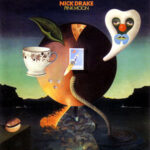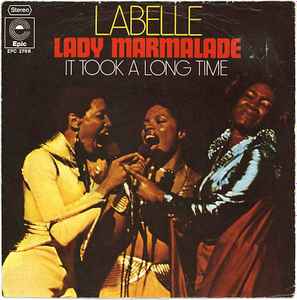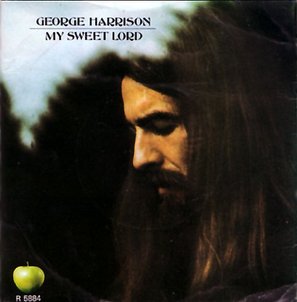 When Nick Drake’s Pink Moon drifts into your speakers, it feels less like a record and more like a visitation. There’s no fanfare, no drumbeat, no electric jolt—just a delicate voice and an acoustic guitar, whispering from some hidden corner of the soul. Released in 1972, Pink Moon was Drake’s final album before his untimely death at 26, and its quiet intensity remains one of the most haunting and intimate experiences in modern music. It’s the sound of isolation turned to art, despair transformed into fragile beauty.
When Nick Drake’s Pink Moon drifts into your speakers, it feels less like a record and more like a visitation. There’s no fanfare, no drumbeat, no electric jolt—just a delicate voice and an acoustic guitar, whispering from some hidden corner of the soul. Released in 1972, Pink Moon was Drake’s final album before his untimely death at 26, and its quiet intensity remains one of the most haunting and intimate experiences in modern music. It’s the sound of isolation turned to art, despair transformed into fragile beauty.
The entire album lasts barely 28 minutes, and its title track—just over two minutes long—serves as both introduction and epitaph. “Pink Moon” isn’t just a song; it’s a fleeting message from an artist who had all but vanished from the world around him. Every note feels deliberate, stripped to its essence. The result is one of the most mysterious and emotionally resonant recordings in popular music history.
A Moonlit Minimalism
“Pink Moon” opens with a soft, unadorned acoustic guitar, played with the kind of precision that feels almost too delicate to touch. There are no strings, no bass, no drums—just Drake, his instrument, and a single, ghostly piano accent that arrives near the end like a passing comet. From the first moment, it’s clear this isn’t the lush folk-pop of his earlier records like Five Leaves Left or Bryter Layter. This is something stripped bare—an artist alone in the dark, recording his final statement in a single, unbroken breath.
Drake recorded the entire Pink Moon album in just two late-night sessions at Island Records’ studio in London. He arrived unannounced, asked engineer John Wood to roll tape, and played the songs straight through. There were no producers, no other musicians, no second takes. It was a direct transmission of feeling—a quiet act of defiance against the noise of the world.
“Pink Moon,” the title track, captures that raw purity better than any other song in his catalog. Its melody feels ancient, its rhythm like a heartbeat slowing down. The lyrics, sparse and elliptical, read like a riddle:
“I saw it written and I saw it say
Pink moon is on its way.”
That single phrase—half prophecy, half warning—hangs in the air long after the final chord fades.
A Voice Like Smoke
Nick Drake’s voice on “Pink Moon” is unlike anyone else’s. It’s hushed but powerful, fragile but assured. There’s an intimacy to his delivery that makes it feel like he’s singing directly to you, and only you. He doesn’t emote in the traditional sense—there’s no dramatic rise or fall, no vocal pyrotechnics—but instead, he carries emotion through quiet control.
Listening to him, you sense both comfort and distance. He’s close enough to feel his breath, yet impossibly far away, like a ghost echoing through an empty room. The clarity of his tone contrasts with the opacity of his words. You can hear every syllable, but understanding their full meaning feels like chasing moonlight through fog.
The Mystery of the Lyrics
“Pink Moon” has only two verses, and yet entire essays have been written trying to decipher them. The lyrics are brief, cryptic, and almost mythic in tone:
“Pink moon gonna get ye all.”
It’s both playful and foreboding. The “Pink Moon” could symbolize rebirth, enlightenment, doom, or liberation. Some interpret it as a metaphor for death—inevitable and impartial, “getting” everyone in the end. Others see it as a sign of cosmic renewal, a reminder that life and death are part of the same celestial cycle.
Drake never explained it, and that’s part of the song’s enduring power. Like all great poetry, it leaves space for your imagination to breathe. The Pink Moon itself, a rare spring phenomenon, becomes a metaphor for beauty that’s both fleeting and eternal—an image perfectly aligned with Drake’s own brief, luminous life.
The Sound of Solitude
To appreciate “Pink Moon,” it helps to understand where Nick Drake was when he wrote it. After his first two albums failed commercially, he withdrew almost completely from public life. The shy, introspective musician who once seemed poised to follow in the footsteps of British folk contemporaries like John Martyn or Richard Thompson instead retreated into silence.
By 1971, Drake was living mostly in isolation at his parents’ home in Tanworth-in-Arden. He rarely performed, spoke little, and often seemed lost within his own mind. Friends and family have described those years as marked by deep depression, though Drake himself avoided the topic. What he didn’t express in conversation, he poured into music—quietly, privately, as if leaving behind a coded message for anyone who might still be listening.
The austerity of “Pink Moon” mirrors that emotional landscape. It’s music as pure as meditation—every note intentional, every silence meaningful. There’s no performance in the traditional sense; it’s simply the sound of being.
Beyond the Darkness
It’s tempting to view “Pink Moon” purely through the lens of tragedy, but doing so misses part of its brilliance. While the song does carry a sense of finality, it’s not hopeless. There’s a strange, transcendent calm to it—as though Drake had made peace with something larger than himself.
The song doesn’t wallow; it floats. Its minimalism feels like liberation, not despair. The repetition of the line “Pink moon gonna get ye all” can even sound joyful, a kind of cosmic wink. It’s as if Drake is acknowledging the impermanence of everything with quiet acceptance.
That’s what separates “Pink Moon” from so many so-called “sad songs.” It’s not about suffering—it’s about surrender. Drake doesn’t fight the darkness; he finds beauty within it.
Rediscovery and Resurrection
When Pink Moon was released in 1972, it went largely unnoticed. There were no singles, no tour, and virtually no promotion. Drake, too withdrawn to perform, didn’t even attend the album’s mastering session. Critics admired its stark beauty but had no idea what to do with it. The record disappeared almost as quietly as it arrived.
It wasn’t until decades later that Pink Moon began to find its audience. A 1999 Volkswagen commercial featuring the song’s title track introduced millions of listeners to Drake’s music for the first time. Suddenly, a new generation was captivated by his quiet intensity. Sales of his albums skyrocketed, and Pink Moon became a touchstone for artists across genres—from indie folk to alternative rock to ambient pop.
Musicians like Bon Iver, Elliott Smith, Beck, and José González have all cited Drake as a profound influence. You can hear echoes of Pink Moon in everything from Iron & Wine’s hushed acoustic recordings to the minimalist emotional landscapes of Radiohead’s Kid A era.
It’s one of the great ironies of music history that a song so small and intimate became such a far-reaching force. But perhaps that’s fitting. Like its lunar namesake, Pink Moon was always destined to shine brightest after it was gone.
The Power of Silence
What makes “Pink Moon” so timeless isn’t just its beauty—it’s its restraint. Drake understood something that many artists never learn: silence can be as expressive as sound. The spaces between his chords, the pauses in his phrasing, the quiet hum of the tape—all of it contributes to the atmosphere.
Listening on headphones, you can almost hear the air in the room, the creak of the guitar’s wood, the faint click of fingernails on strings. It’s music that breathes. In a world saturated with noise, that kind of intimacy feels revolutionary.
There’s also something profoundly honest about its imperfection. The recording isn’t polished; it’s raw and real. That authenticity gives it an emotional gravity that studio gloss could never replicate. You feel as if you’re sitting beside Drake, watching him create in real time—a ghostly, fleeting connection between artist and listener.
The Eternal Glow
“Pink Moon” endures because it speaks to something universal. Beneath its sadness lies a serenity that feels almost spiritual. Drake may have been struggling with depression, but he also possessed an acute awareness of beauty—the kind that transcends suffering.
The song’s title itself captures that paradox. A pink moon, rare and radiant, symbolizes renewal and awakening. It’s the brief moment when the night sky blushes with light before returning to darkness. That’s what the song feels like: a small, perfect flash of illumination in the void.
There’s also a sense of timelessness. “Pink Moon” doesn’t belong to any era. It could have been written yesterday or a hundred years ago. It exists outside trends and genres, suspended in its own fragile stillness.
Legacy and Reflection
Over fifty years after its release, “Pink Moon” remains one of the most revered acoustic songs ever recorded. It’s been covered by countless artists, but no one has ever quite captured its spectral magic. That’s because its power lies not just in the melody or the lyrics, but in the alchemy of Drake’s presence.
To listen to “Pink Moon” is to confront mortality, solitude, and beauty all at once. It’s a reminder that art doesn’t have to shout to be heard—that sometimes the quietest voices echo the longest.
Drake may not have lived to see his influence, but his spirit lives on in every artist who dares to create from a place of vulnerability. His music became a kind of posthumous resurrection, a soft voice rising from the silence he left behind.
Final Thoughts
“Pink Moon” is more than a song—it’s a moment suspended in time. It’s what happens when an artist strips away everything but truth and still finds melody in the emptiness. There are no grand crescendos or lyrical declarations, just the steady pulse of a guitar and a man’s quiet voice telling the world what he saw written in the stars.
Decades later, that voice still carries across the void, gentle but unyielding. “Pink moon gonna get ye all,” he warns—or promises. Either way, it feels like both a farewell and a blessing.
Nick Drake didn’t just write songs; he built constellations out of silence. Pink Moon is his final and most luminous one—a haunting reminder that even the smallest light can outshine the darkness.


